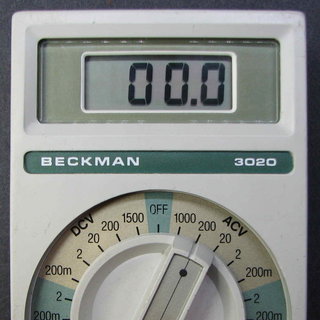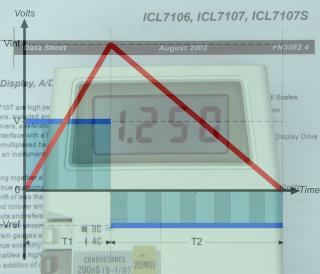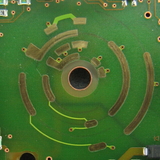Hewlett-Packard has built a reputation for quality bench multimeters every bit as impressive as Fluke has for the handheld variety. Nowadays they’re called Agilent, but this unit has the HP nameplate on it, and date codes on the parts inside suggest that it was manufactured in early 1987.
The 3468A and it’s cousin the 3478A are 5½-digit 300,000-count multimeters. Both have instrument interfaces, the former with HP-IL (serial) and the latter with HP-IB (parallel, aka GPIB.) Basic 1-year DCV accuracy is 0.02% of reading + 2 counts for the 3V range. The 3478A has ever so slightly better accuracy figures and adds a 30mV range.


 This is the first in a series of posts looking at how a digital multimeter actually works. First a little theory, then later we’ll look at the ubiquitous ICL7106 that basically started the ball rolling on handheld DMMs back in the late 1970s, and is still used today in your basic $5 hardware-store cheapie.
This is the first in a series of posts looking at how a digital multimeter actually works. First a little theory, then later we’ll look at the ubiquitous ICL7106 that basically started the ball rolling on handheld DMMs back in the late 1970s, and is still used today in your basic $5 hardware-store cheapie. It’s a fact that you can repair as many multimeters with a bottle of isopropyl alcohol and some Q-tips (cotton buds), as you can with a soldering iron. In many cases, malfunctions can be fixed by careful disassembly and cleaning of affected parts. Only simple tools and materials are required, but caution is recommended so as not to damage any of the components or plastic bits.
It’s a fact that you can repair as many multimeters with a bottle of isopropyl alcohol and some Q-tips (cotton buds), as you can with a soldering iron. In many cases, malfunctions can be fixed by careful disassembly and cleaning of affected parts. Only simple tools and materials are required, but caution is recommended so as not to damage any of the components or plastic bits.